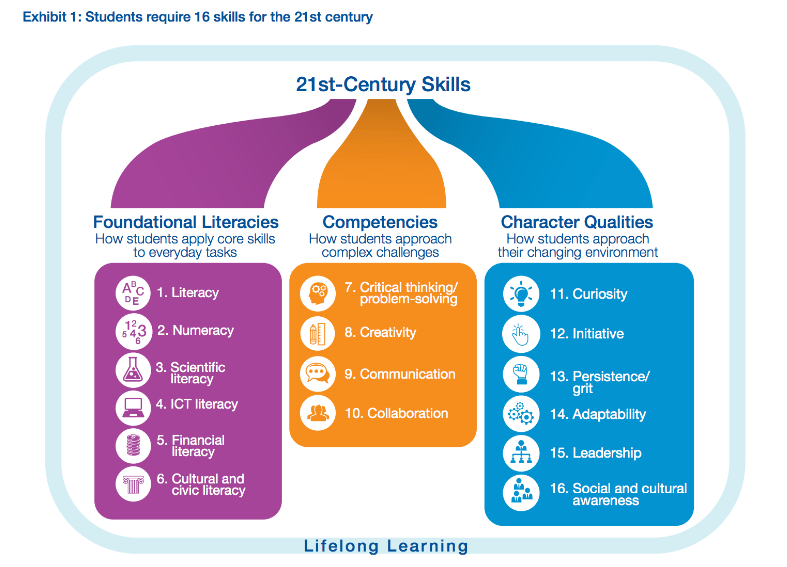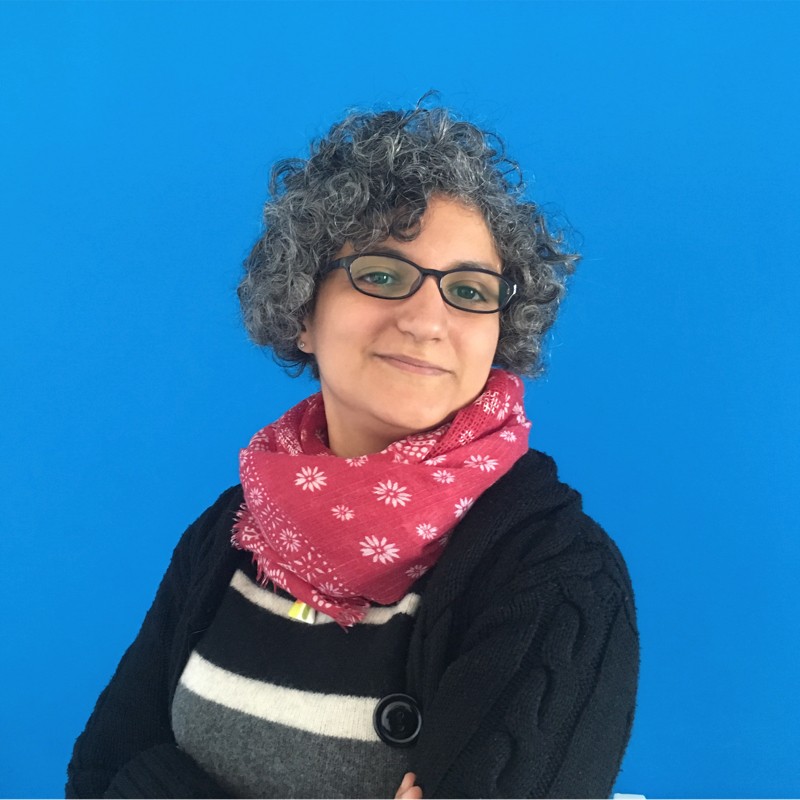Many ESL teachers have probably heard about and might have even attended training sessions on what 21st century skills are. It may be daunting to implement them, especially since the tips, tricks, and their logic presented in these workshops might not be easily adaptable to different contexts. In this article, I will try to lay out examples you can use to subtly implement different skills in your lesson/context with rationale for all these.
I personally like looking at the chart below before starting a unit. It helps me to think about what skills, personal characteristics, and foundational literacies to implement in a given unit and how to do that. Competencies are used so often that they become the foundation to others. They are usually called the 4 Cs: critical thinking, creativity, communication and collaboration. The latter two are indispensable to each lesson as they are translated into pair work and group work.

The literacies
Foundational literacies are the core skills everyone needs: literacy (of any language) and numeracy. Secondary students should have some notions of scientific and ICT literacies (depending on whether they are lower or upper secondary) as some units require these. An example of this is a unit talking about food and its benefits where we can raise awareness to different food components and their downsides (think of sugar, salt, food additives, etc.). This example digs deeper into scientific literacy and critical thinking skills. If you have time and want to push this further, you can ask your students to work in pairs and give a short presentation as a project. This in turn ticks the boxes of collaboration to achieve a common goal and public speaking (a life skill needed later in life).
Cultural and civic literacies are rarely the focus of most curricula. Not to mention that many learners may know more about other countries than their own. A unit about discovery of amazing places is a good instance of how to implement these literacies in the local context. You can expand on the topic and focus on their own countries only. This can help them not only learn about hidden gems of their nations, but also shift their focus to the positive and negative impacts of tourism on different parts of their motherland. As a result, they can think of how to be more responsible tourists. The final task of this unit can be creating a PowerPoint presentation on “how to be a responsible tourist in our country” that can be shared with the wider school community. This task ticks the box of ICT literacy and communication.

Financial literacy is something we tend to only learn about as adults to better manage our lives. But young people should learn this at an early age to get an advantage. That’s why it is important to start learning about it as an ESL teacher to be able to implement it in some of your lessons. If you have a unit that talks about money and business, it’s a good idea to focus on the topic of “how to open a business in your country”. This subject may seem outlandish, but it helps learners see the world of work from a different perspective: of an employer, not an employee. You may want to give them the stages of opening a startup (choosing a problem, finding a solution, thinking of a couple of streams of sustainable income, writing a sample business plan, and presenting the project to a fictional investor). This helps learners change their perspective from being a consumer who complains about different products to active citizens who make a change in their country. It involves most skills mentioned in the chart above: collaboration, critical thinking, initiative, leadership, creativity, communication, financial literacy, ICT literacy, social and civic literacy.
Social and cultural awareness are two of the most crucial pillars of any society. Many learners have not been exposed to differences in life, even as subtle as having different opinions or as obvious as being fashionable. Diversity lies somewhere in between. When a unit talks about friendships, secondary learners should explore how their classmates can be different from them (think ADHD, dyslexia, being adopted, vitiligo, different religion, being overweight, etc.) in a positive light. This can be implemented by talking about these visible and invisible differences. You can ask your students to learn more about one or two and discuss how this social situation impacts the person’s life and what they want others to know about them. This lets young people become aware that just because someone looks the same as us, they may still experience the world differently. It also teaches them to be more empathetic towards others and help people who are potentially bullied. This builds their emotional intelligence and compassion.

Curiosity is a personal characteristic that is hard to teach but that doesn’t mean it is impossible to plant the seed in your students. You can guide them to be responsible to find the information they need. You may plan an inquiry based learning (IBL) lesson, where you, as their teacher, give them the freedom to suggest topics they are curious to learn about. You may be surprised by what secondary learners can come up with. My learners’ questions range from “Why can people be evil?” to “Why is Coca Cola black?”. After boarding the questions, each student chooses one to look up the answers to. You need to stress the fact that they have to read as many opinions as they can and they have to formulate their own after reading at least three. In this case, you need your learners to have access to the internet to be able to find different answers to their questions. After finishing their research, you can pair them up to share ideas and change partners once they have finished.
Conclusion
You may have noticed that grammar and vocabulary are not the main focus in these examples as these lessons fall under the umbrella of task based learning (TBL), project based learning (PBL) or IBL. There is a shift in the main aim from systems (grammar & vocabulary) to skills. It is worthwhile emphasizing the fact that any skill(s) or idea(s) you believe are relevant to a specific unit should be based on the logic of “can my students use these in their day to day lives?“
In a nutshell, whatever topic you may have in your textbook, you should incorporate at least a couple of 21st century skills. The way you, as the teacher, tweak the unit’s lessons should always have a link to everyday life.

